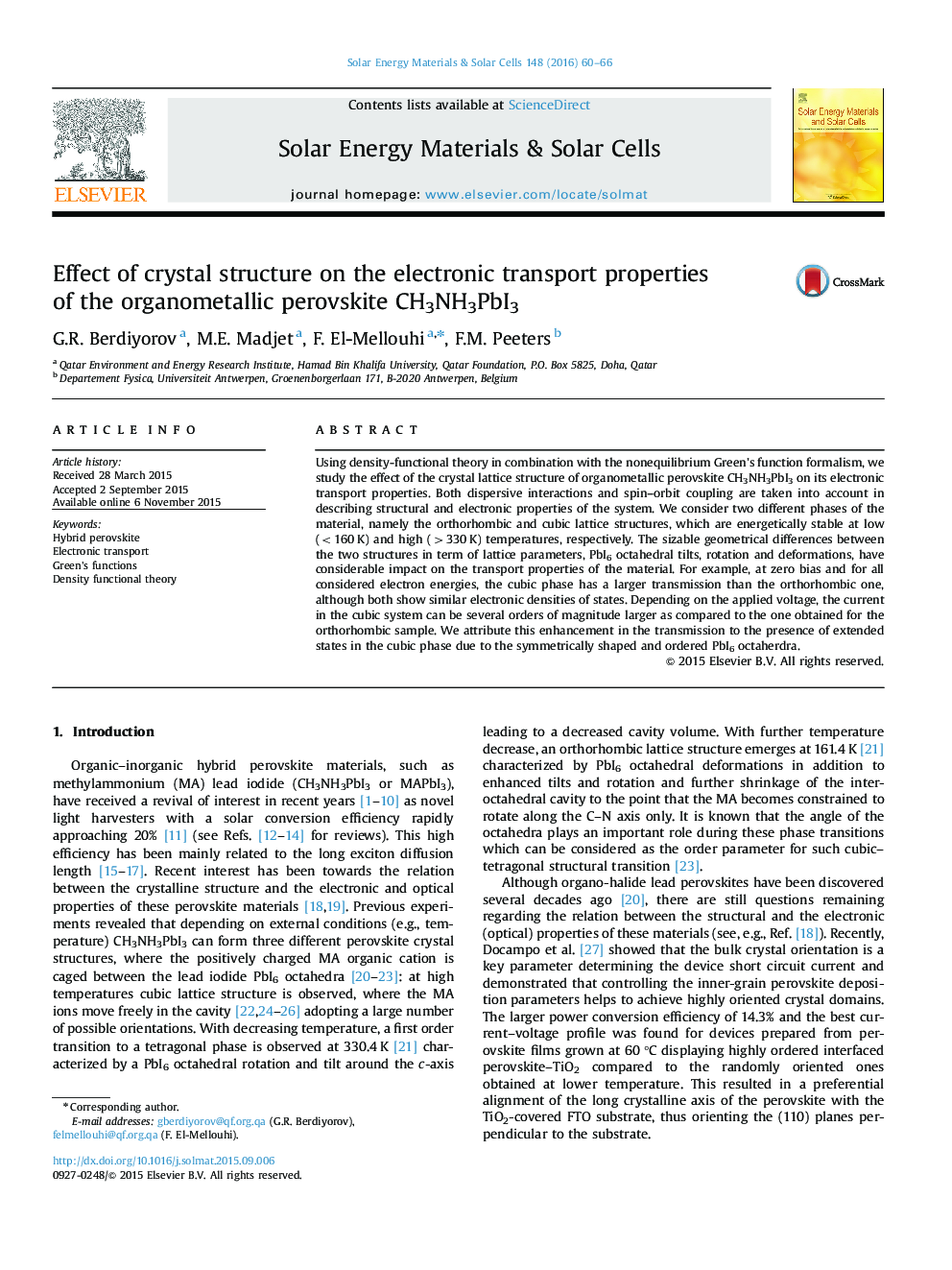| Article ID | Journal | Published Year | Pages | File Type |
|---|---|---|---|---|
| 77631 | Solar Energy Materials and Solar Cells | 2016 | 7 Pages |
•Electronic transport in CH3NH3PbI3 is studied using DFT and Green’s formalism.•Crystalline structure of the materials has a major impact on the transport.•Cubic phase shows better transport as compared to the other less symmetric states.•The effect originates from the structural changes in the material.•Effects of external voltage and the spin-orbit coupling are discussed.
Using density-functional theory in combination with the nonequilibrium Green׳s function formalism, we study the effect of the crystal lattice structure of organometallic perovskite CH3NH3PbI3 on its electronic transport properties. Both dispersive interactions and spin–orbit coupling are taken into account in describing structural and electronic properties of the system. We consider two different phases of the material, namely the orthorhombic and cubic lattice structures, which are energetically stable at low (<160K) and high (>330K) temperatures, respectively. The sizable geometrical differences between the two structures in term of lattice parameters, PbI6 octahedral tilts, rotation and deformations, have considerable impact on the transport properties of the material. For example, at zero bias and for all considered electron energies, the cubic phase has a larger transmission than the orthorhombic one, although both show similar electronic densities of states. Depending on the applied voltage, the current in the cubic system can be several orders of magnitude larger as compared to the one obtained for the orthorhombic sample. We attribute this enhancement in the transmission to the presence of extended states in the cubic phase due to the symmetrically shaped and ordered PbI6 octaherdra.
